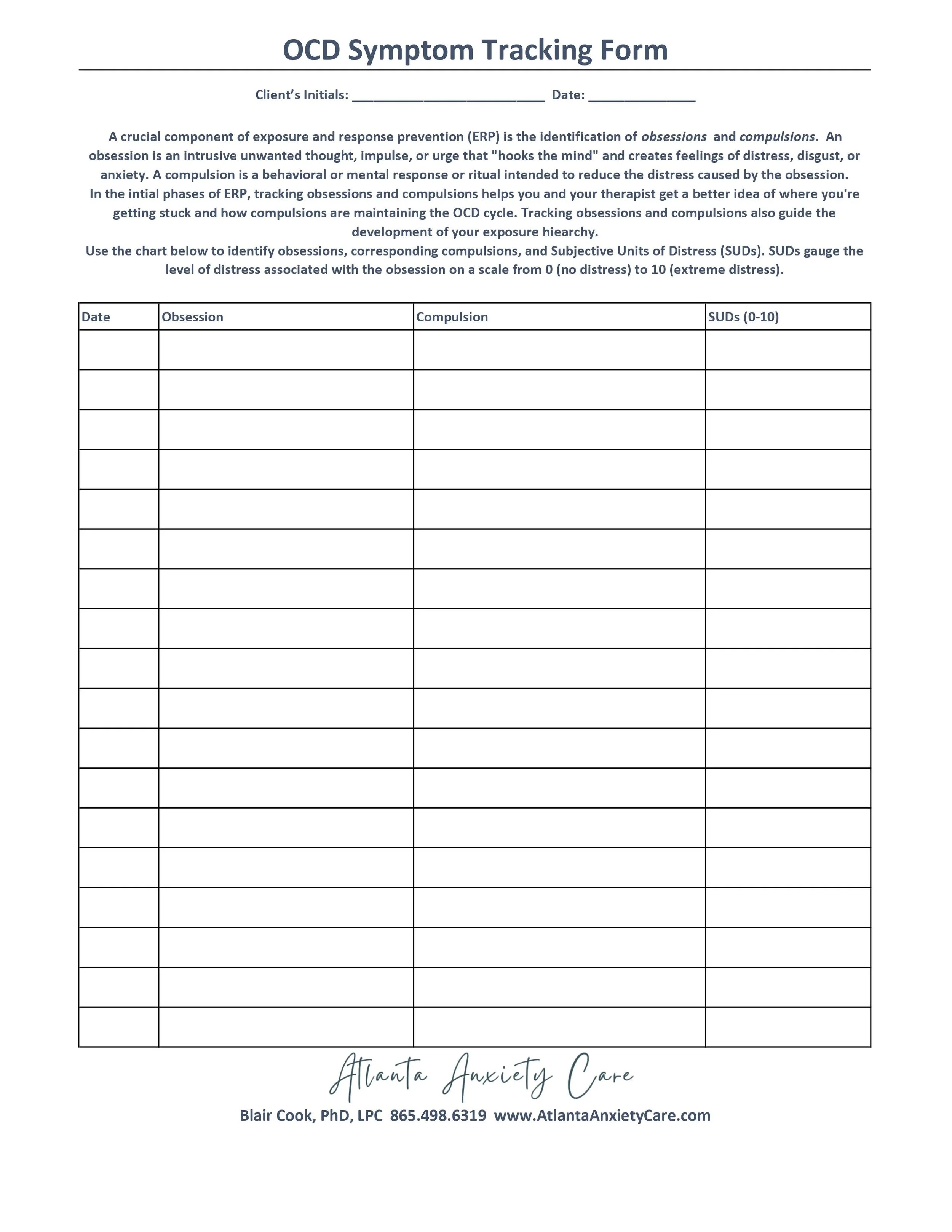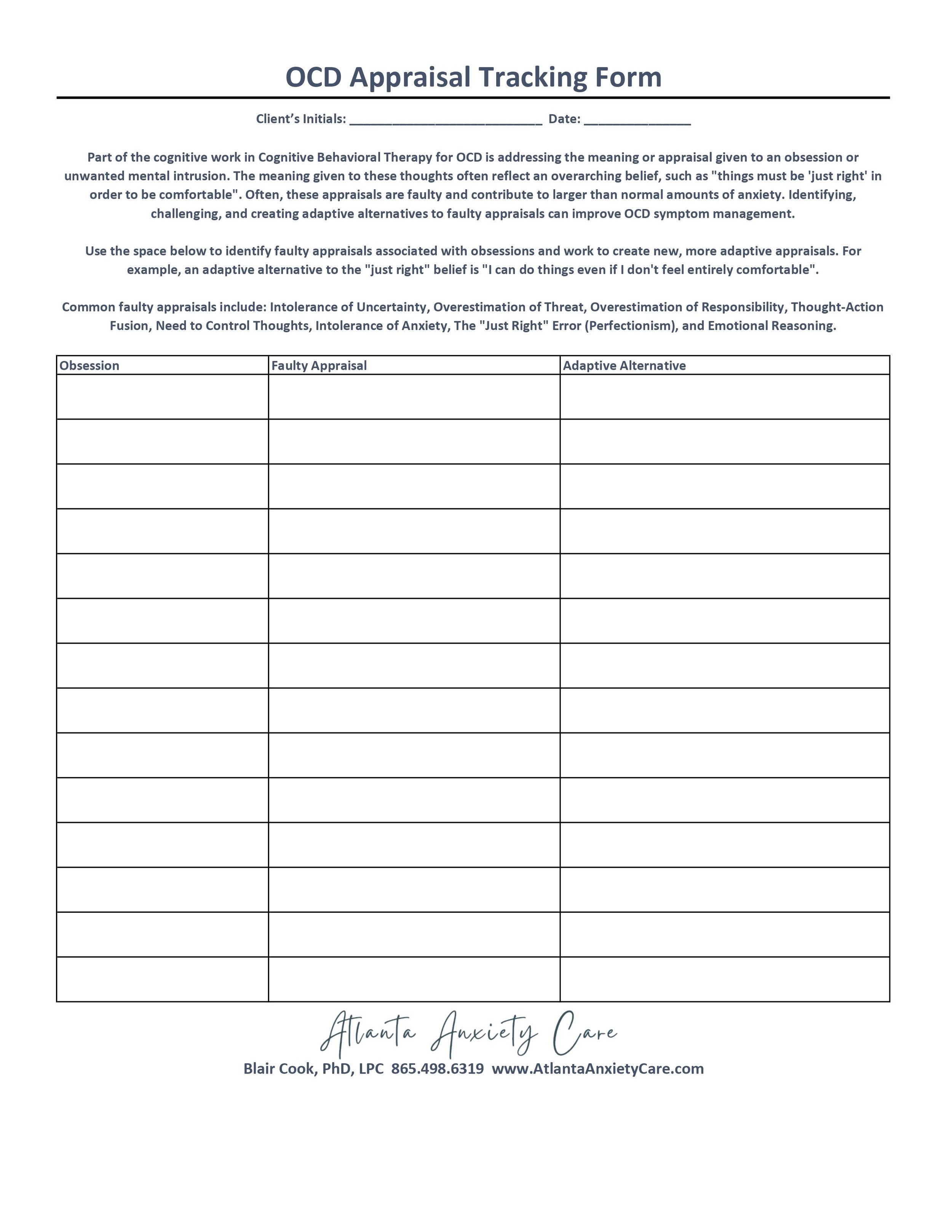OCD Treatment Tools
Below you will find links to resources that can support the work you are doing to manage your OCD symptoms. These resources by no means take the place of therapy but instead, can add structure and insight to the work you’re doing in therapy.
OCD symptom Tracking Form
This tool is designed to be used at the start of therapy to help clients and clinicians gain insight into patterns of obsessions and compulsions. It can be meaningful to differentiate between an obsession and a compulsion, thus highlighting the triggers (unwanted intrusive thoughts, images, or impulses) to compulsive behaviors.
Hierarchy Form
Establishing a hierarchy - a sequential list of feared situations, obsessions, or compulsion triggers - can help you structure your exposures, starting with the least distressing and moving up to more distressing items as you develop skills and confidence in your ERP work.
5 Exposure Tips
Need some guidelines for working through your ERP at home? Check out this inforgraphic for 5 tips to help you get the most out of your ERP.
Faulty Appraisal Tracking Form
Part of the cognitive work for treating OCD is making shifts in faulty beliefs or appraisals that perpetuate or exacerbate anxiety. Use this form to identify faulty appraisals, maladaptive beliefs, or cognitive distortions and to create new, more adaptive and realistic alternatives.
Reassurance Coupon
As you are reducing and eventually eliminating reassurance seeking from partners, friends, or family members, these coupons can help you track just how much reassurance seeking you’re doing. These coupons are great to give to the people you seek out so they can help hold you accountable to your goals. Again, the goal is to no longer need to seek reassurance from others for your OCD fears.




